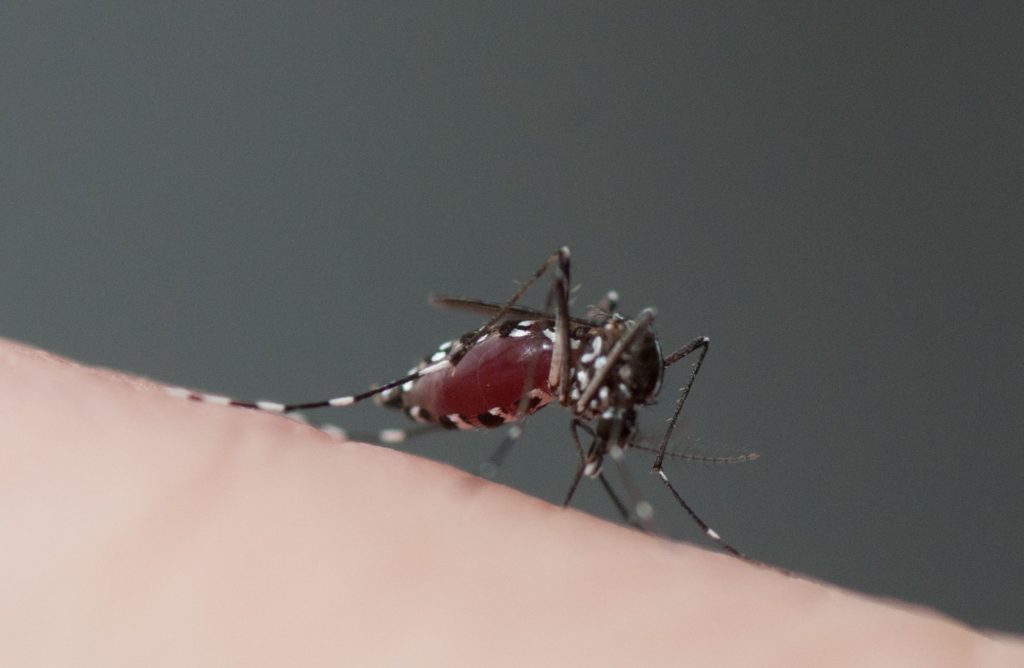On February 14, the European Commission officially approved the Infravec2 project (http://www.infravec2.eu). This project will improve the European large-scale facilities (infrastructures) for research on mosquitoes and other insects (vectors) that carry human and animal diseases, and will promote sharing of the facilities by European researchers. The Infravec2 project is funded by the Commission’s Horizon 2020 Research Infrastructure Program (http://ec.europa.eu/). Infravec2 (full project title, “Research Infrastructures for the control of vector-borne diseases”) is an international consortium of 24 partner institutions coordinated by the Institut Pasteur, Paris. The project will continue through 2021, and has a 10 million euro budget. The project kickoff meeting will be in Paris 15-17 March 2017.
Diseases transmitted by mosquitoes and other insects represent a major public health concern worldwide. The insects that carry these diseases are referred to as vectors. The illnesses include viral infections (such as dengue, Zika, and yellow fever), as well as parasitic diseases (such as malaria and leishmaniasis).
According to Infravec2 project coordinator Kenneth Vernick of the Institut Pasteur in Paris, “Many people think of mosquito and insect-borne diseases as health problems of tropical regions. This used to be true, but these diseases have spread into Europe in the past decade, and are not going away. Controlling the insect vector is a key target in protecting the public, because these diseases are only transmitted by the vector, you can’t get infected by sneezing.” Global climate change has allowed Aedes mosquito species (particularly the Asian tiger mosquito Aedes albopictus, see image) to expand their habitats to include southern Europe. Increased global human mobility, including of infected people, has also contributed to the mounting risk. Finally, the emergence of new pathogens adapted to European environments may play a role.
Insects can also transmit important animal diseases, such as bluetongue and Schmallenberg viruses. These diseases are responsible for large economic losses in Europe and elsewhere. Insects that feed on the blood of wild animals as well as on people can serve as so-called bridge vectors to carry new animal diseases to humans, referred to as emerging diseases.
Infravec2’s main aim is to link together sophisticated facilities essential for research advancement in insect vector biology, and to allow researchers and companies access to these rare resources through a simple request process. The consortium includes many secure European insectaries specialized in experimental infection and containment of insect vectors. Other key insect facilities include field sites in Africa, the Pacific, and the Americas. Infravec2 will increase researchers’ and innovators’ access to these facilities to benefit research and public health. The project will also develop novel methods and innovative technologies to advance research in this critical area for European and global public and animal health.
Infravec2’s long-term goal is to build a lasting European network of facilities to control insect vector-borne disease. A robust infrastructure will be able to respond to current insect spread disease epidemics. Equally important, Infravec2 will also contribute to Europe’s ability to predict and prevent the future insect carried disease outbreaks. Infravec2 will accelerate European innovation in basic and translational insect borne disease research.
For additional information, contact info@infravec2.eu
For a printable version of the press release [PDF]

Female Aedes albopictus, also called the tiger mosquito because of its striped coloration. On the island of La Reunion in the Indian Ocean. The tiger mosquito is a vector transmitting multiple human viral diseases, including chikungunya, Zika, and dengue fevers (Copyright IRD, author Maxime Jacquet).
INFRAVEC2 PROJECT PARTNERS
1. INSTITUT PASTEUR, France
http://www.pasteur.fr
2. UNIVERSITY OF GLASGOW, United Kingdom
http://www.gla.ac.uk
3. POLO D’ INNOVAZIONE DI GENOMICA, GENETICA E BIOLOGIA SCARL, Italy
http://www.pologgb.com
4. INSTITUT DE RECHERCHE POUR LE DEVELOPPEMENT, France
http://www.ird.fr
5. Institut Pasteur de Nouvelle-Calédonie, New Caledonia
http://www.institutpasteur.nc
6. UNIVERZITA KARLOVA V PRAZE, Czech Republic
http://www.cuni.cz
7. CENTRE DE COOPERATION INTERNATIONAL EN RECHERCHE AGRONOMIQUE POUR LE DEVELOPPEMENT, France
http://www.cirad.fr
8. IMPERIAL COLLEGE OF SCIENCE TECHNOLOGY AND MEDICINE United Kingdom
http://www.imperial.ac.uk
9. INSTITUT DE RECERCA I TECNOLOGIA AGROALIMENTARIES, Spain
http://www.irta.es
10. EUROPEAN MOLECULAR BIOLOGY LABORATORY, Germany
http://www.embl.org
11. THE PIRBRIGHT INSTITUTE LBG, United Kingdom
http://www.pirbright.ac.uk/arthropod-supplies
12. CENTRO AGRICOLTURA E AMBIENTE GIORGIO NICOLI SRL, Italy,
http://www.caa.it
13. TropIQ Health Sciences B.V. Netherlands
http://www.tropIQ.nl
14. MAX PLANCK GESELLSCHAFT ZUR FOERDERUNG DER WISSENSCHAFTEN E.V., Germany
http://www.mpg.de
15. FOUNDATION FOR RESEARCH AND TECHNOLOGY HELLAS, Greece
http://www.forth.gr
16. STICHTING KATHOLIEKE UNIVERSITEIT, Netherlands
http://www.ru.nl
17. Univerzitet u Novom Sadu, Poljoprivredni fakultet Novi Sad, Serbia
http://polj.uns.ac.rs
18. UNIVERSITAET ZUERICH, Switzerland
http://www.uzh.ch
19. LIVERPOOL SCHOOL OF TROPICAL MEDICINE, United Kingdom
http://www.liv.ac.uk/lstm/lstm.html
20. INSTITUT PASTEUR DE DAKAR, Senegal
http://www.pasteur.sn
21. UNIVERSITE DES SCIENCES DES TECHNIQUES ET DES TECHNOLOGIES DE BAMAKO, Mali
http://www.usttb.edu.ml
22. Fondation Health Sciences e-Training, Switzerland
http://hset.bio-med.ch
23. WAGENINGEN UNIVERSITY, Netherlands
http://www.wur.nl/en.htm
24. MINISTERE DE LA SANTE, Burkina Faso
http://www.sante.gov.bf/
